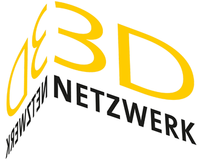How 3D printing can support your professional business with process optimization
Business clients benefit from a variety of different advantages 3D printing provides. 3D printing, or Additive Manufacturing, describes the process of producing a physical 3D object directly from its digital model. The additive manufacturing technology is continuously evolving and the advantages of Additive Manufacturing make it one of the most promising technologies, and a real prospect for professional businesses. There are many different types of 3D printing technologies available, and the way it can benefit businesses have been discussed below.
Cost reduction: Additive Manufacturing processes help you reducing costs
Benefits from in-house prototyping by using 3D printing technologies
Product design is an iterative process, and with every design change the associated prototyping costs increases. Furthermore, outsourcing the prototypes can take days and adds to the costs. Using 3D printing enables multiple iterations of the product design and more design freedom. The prototypes can be fabricated, and the designs can be verified and then refined accordingly. In-house prototyping and manufacturing ensures that the intellectual property protection. Thus, new innovative design ideas, products can be developed in-house, with confidentiality. Companies can save time and costs as well as safeguard the its intellectual property with in-house prototyping and manufacturing using 3D printing. Contact our engineering team for more information.
Rapid Prototyping: Increased efficiency due to reduced time expenditure
Prototyping using 3D printing helps to refine and develop the product concepts faster. Outsourcing the new prototypes can result in longer lead times and relying on the suppliers can delay the process. The design can be printed in-house using 3D printing within hours and can be easily verified, thus saving significant time. Using 3D printing significantly reduces the time required to turn ideas into products. Furthermore, the time saved in prototyping phase allows businesses to produce the product and reach the market quicker.
Increased safety in terms of investments for production tools
During the development phase, with 3D printing, the designers and engineers get a real-life version to study, test and optimize. The prototype or end user part can be verified for the form, fit, functionality, machinability of the product in an affordable and significantly faster way as compared to conventional techniques. This ensures that the design is ready for series production and reduces the risks related to expensive production tool investments.
Optimized communication - creating tangible products for better visualization
3D printed prototypes prove to be very helpful in creating and presenting new product ideas to potential investors, customers, colleagues etc. It becomes way easier to convey a product idea using a tangible product rather than visualizing on the basis of drawings, and digital models. Make your team and your customers easily understand your ideas of technical product design or even sophisticated architecture models. You can benefit from saving time and effort due to better visualization and therefore better communication, by creating tangible product experiences.
High level of design freedom includes complex structures and shapes
3D printing provides the ability to design complex shapes with fine and intricate details, or even scan complex structures from nature, and then fabricate them. Complex geometries that are virtually impossible to produce with conventional methods can be fabricated using 3D printing. Furthermore, 3D printing reduces part weight through innovative lattice structures and honeycomb structures, while maintain the part strength. Thus, a lot of industrial metals parts are now being replaced by 3D printed parts which are lighter, better engineered. Get more valuable insights and interesting information in our 3D innovaTech Tech-Blogs.
Sustainability in Manufacturing
Traditional manufacturing process is mostly subtractive process wherein the raw material gets wasted and reused, over and over. This results in high costs and waste. As compared to the traditional manufacturing process, additive manufacturing process is an additive process, wherein very less waste is generated, and the manufacturing waste generated can be easily reused. One of the biggest advantages of 3D printing is the compression of the supply chain and the reduction in the amount of distance the product will travel. The product can be designed in one country, and the design file can be used to 3D print the part in some another county. Thus, the need for transportation is mitigated, eliminating the associated travel costs, and reducing the fuel emissions generated during international freight. Therefore, 3D printing can help to significantly reduce the carbon footprint. Contact our engineering team for more information.
The benefits 3D printing offers businesses are numerous, and the 3D printing technology is evolving, and the industries are exploring the various possibilities that the 3D printing technology can offer.




